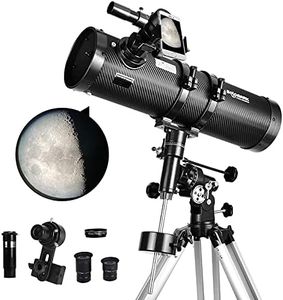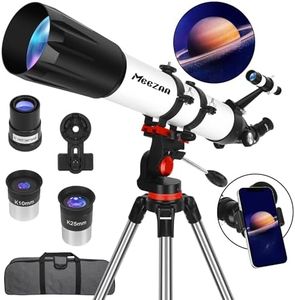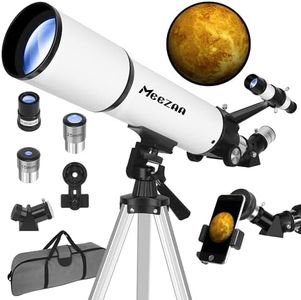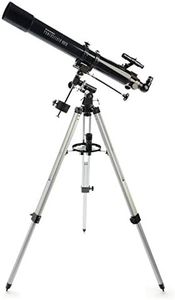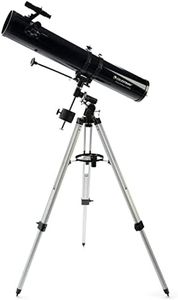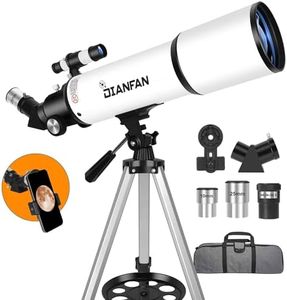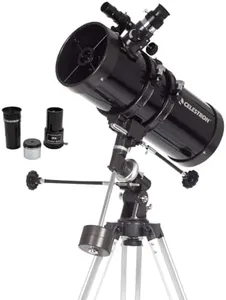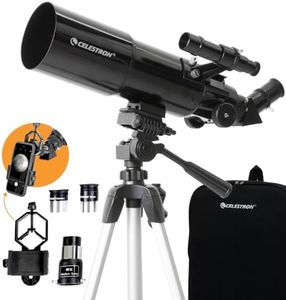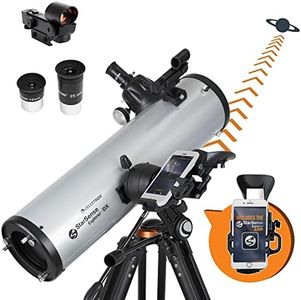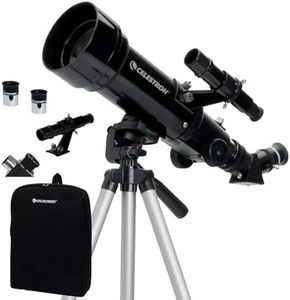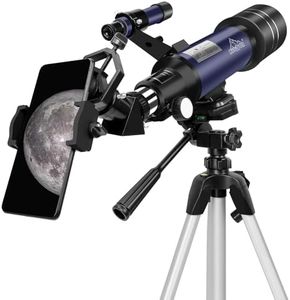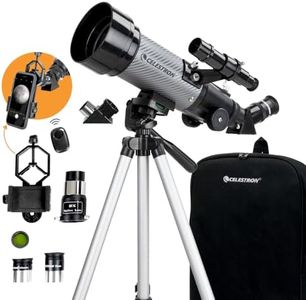We Use CookiesWe use cookies to enhance the security, performance,
functionality and for analytical and promotional activities. By continuing to browse this site you
are agreeing to our privacy policy
10 Best Beginner Telescopes
From leading brands and best sellers available on the web.Buying Guide for the Best Beginner Telescopes
Choosing your first telescope can be exciting but a little overwhelming. The key is to find a telescope that matches your interests, fits your living space, and is easy enough for you to use comfortably. Think about what you most want to see (like the Moon, planets, star clusters, or distant galaxies) and consider how portable your telescope needs to be. Understanding each important spec will help you make an informed decision and enjoy your stargazing adventure from day one.ApertureAperture is the diameter of the main lens or mirror that gathers light. This is one of the most important specs in a telescope because it determines how much light your telescope can collect, which affects how bright and clear the objects you see will appear. Smaller aperture sizes around 60 to 80 millimeters are common in very basic telescopes and are best for looking at the Moon and maybe some bright planets. Medium apertures like 90 to 130 millimeters let you see finer details and some deep-sky objects like nebulae or galaxies. Larger apertures start to offer even more details and fainter objects, but make the telescope bulkier. As a beginner, think about how much detail you want to see and how heavy or large you’re willing for your telescope to be, as a bigger aperture means bigger size and weight.
Focal LengthFocal length is the distance between the telescope's main lens or mirror and the point where the image forms. A longer focal length produces higher magnification with the same eyepiece, which is good for viewing planets and the Moon closely. Shorter focal lengths give you a wider field of view so you can see larger areas of the sky, which is better for star clusters and some galaxies. For beginners, a medium focal length is the most flexible, letting you try a bit of everything.
Mount TypeThe mount is the part of the telescope that holds it steady and lets you point it around the sky. There are two main types: altazimuth and equatorial. Altazimuth mounts are simpler, like a camera tripod, and are good for quick beginners’ viewing sessions since you move them up-down and left-right. Equatorial mounts require a bit more setup but make it easier to track objects in the night sky as the Earth rotates. For most beginners, a stable, easy-to-use altazimuth mount will be less frustrating, but those interested in astronomy as a hobby might soon appreciate the features of an equatorial mount.
EyepiecesEyepieces are the part you look through and they come in different sizes, affecting the magnification. Most telescopes come with one or two eyepieces, offering low and high-power views. A lower power (higher number, like 25mm) gives a wider field, great for scanning the sky or seeing big objects; a higher power (lower number, like 10mm) zooms in closer but narrows the view. A good beginner telescope lets you swap eyepieces so you can experiment with different views.
PortabilityPortability is all about how easily you can move your telescope around. Some telescopes are small and light so you can carry them outside to your backyard or even to a park. Others are larger and heavier, better suited to a fixed spot like a balcony or home observatory. Think about where you plan to use your telescope—if you’ll need to travel with it often, simplicity and lighter weight help enormously.
Ease of SetupEase of setup refers to how quickly and simply you can get your telescope ready to use each night. Some models can be up and running in minutes, while others require careful alignment and assembly. For beginners, the less complicated the setup, the more often you’ll use and enjoy your telescope. Look for a design with straightforward assembly, clear instructions, and minimal need for adjustments.
